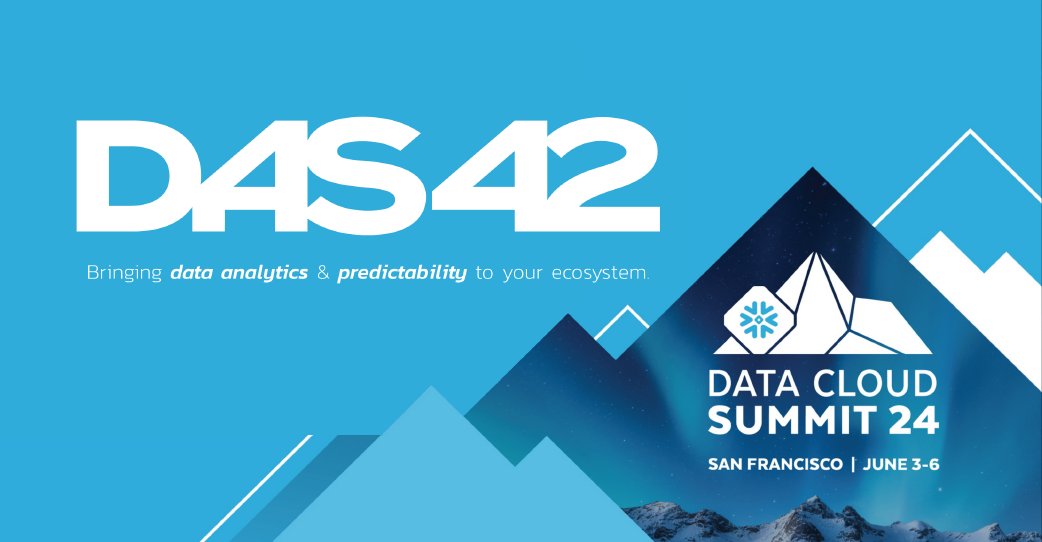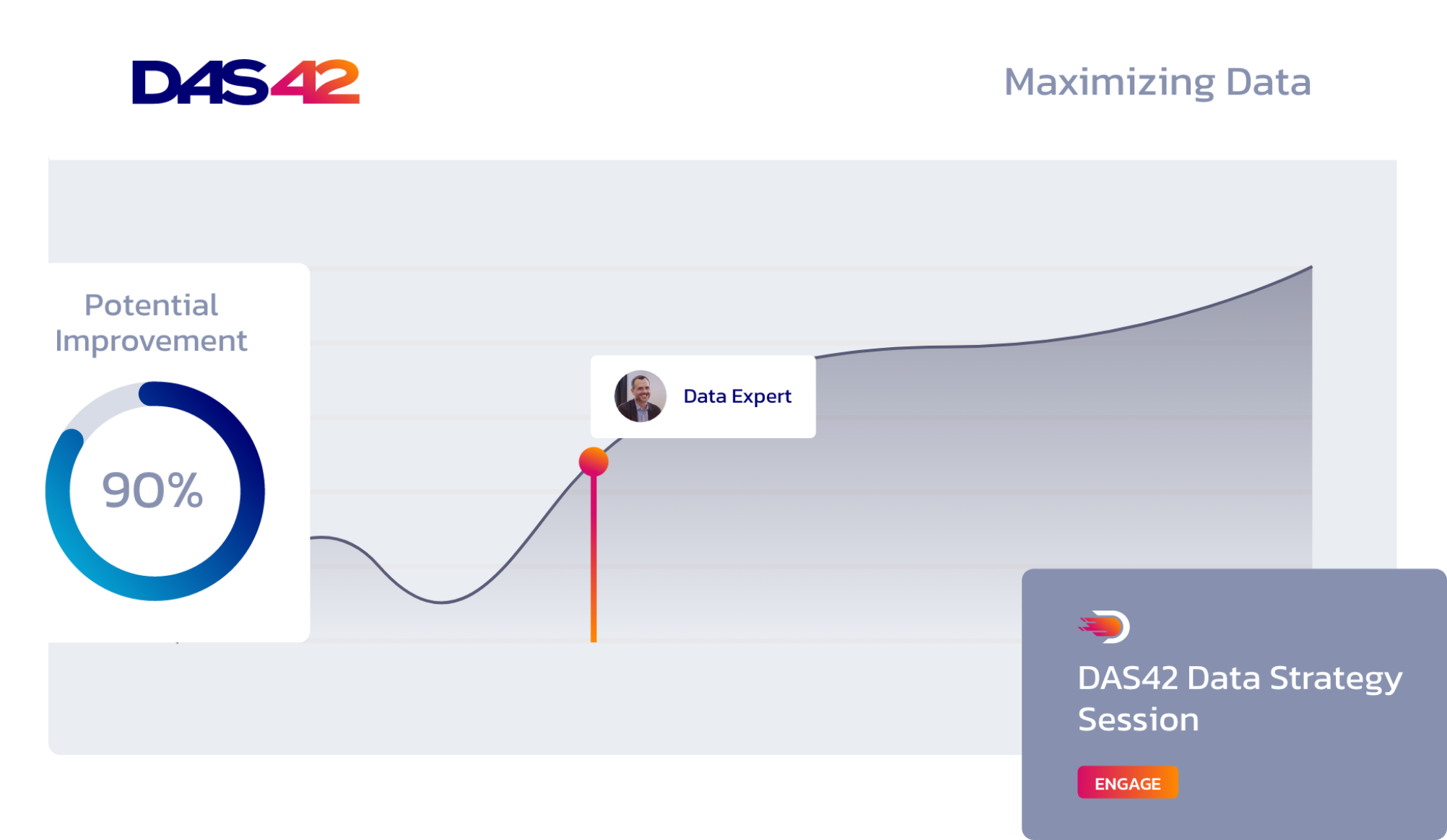Harmonizing Business Success: Orchestrating a Data-Driven Symphony with Effective Data Governance
Envision a business operating like a symphony—where every department plays a vital note in the music. In this ensemble, data takes the lead as conductor, orchestrating the perfect rhythm for success. More than just a framework, data governance functions as the maestro, ensuring that every note—from compliance to insights—resonates in perfect harmony.
Today’s businesses are compelled to steer toward a data-centric identity, charting a course for transformation. But a 2022 study by the technological research and consulting firm Gartner forecasts that by 2025, nearly 80% of organizations aiming to scale digital business will falter due to a lack of a modern data governance approach.[1] This prediction underscores the importance of embracing a contemporary data governance strategy, one created for the digital era.
At DAS42, we empower our clients by helping them dig deep into their data and kickstart a shift toward a data-driven culture within their organizations. Our approach focuses on data quality, metrics development and alignment, change management, data cataloging, and data lineage, laying the foundation for a sturdy and successful data governance framework.
Element 1: Data Quality
Inadequate data quality not only results in missed opportunities but also squanders resources. According to the 2019 Global Data Transformation Survey, the repercussions are far-reaching, with 30% of enterprise time consumed by unproductive tasks due to deficient data quality and availability.[2]
Data quality hinges on accuracy and depends on a concerted effort, ongoing vigilance, and the commitment of internal stakeholders to uphold data integrity at every step. This ensures that data becomes a trusted asset rather than a liability in the pursuit of organizational objectives. Implementing automated data quality checks, paths to quick and transparently documented remediation when issues are identified, and creating processes that promote accurate and complete data entry are just a few of the key elements of data quality in your governance strategy.
Element 2: Metrics Development and Alignment
One of the most common and dreaded refrains in the data world is, “The numbers don’t match.” As organizations become more data-driven, well-meaning individuals and teams may find themselves trying to calculate core metrics on their own, or adjusting them for their department- or role-specific needs. Without a governed approach, you end up with a dozen different ways to calculate your customer satisfaction scores, your net operational revenue, your subscriber churn rate, and so on. Bringing together members from all levels of your organization to clearly and specifically define your core metrics or key performance indicators is a critical step toward data maturity. Ensuring that variants of these are appropriately differentiated in reporting is also key to building a culture of trust in the data.
In addition to determining the appropriate type or unit of measure (e.g., number of churned customers vs. percent of customers churning vs. period-over-period churn acceleration), it is critical to identify what (if anything) should be excluded from a calculation, when measurement can and should occur, and what supplementary metrics may provide leading and lagging indicators.
Element 3: Change Management
Change management in data governance encompasses a systematic approach to organizing, executing, and overseeing alterations to data governance practices within a company. While robust change management practices are increasingly being implemented in enterprise technology domains, structured change management specifically tailored for data is commonly disregarded. Implementing effective change management for data involves establishing processes that ensure teams are well-informed about alterations in data definitions, adjustments in metadata repositories, stewardship responsibilities, and other critical aspects of data governance.
The cooperation of the workforce is pivotal for successful organizational changes. Studies highlight that when employees resist change and lack support from management, at least 70% of change initiatives end in failure.[3] We see every day how embracing change management allows organizations to nurture a culture of continual improvement, ensuring the enduring success of their data governance efforts.
Element 4: Data Cataloging
An effective data catalog can function as much more than simply a “data dictionary”, ensuring easy accessibility and organization. It fosters clear data visibility, an essential component of dependable data governance. Data catalogs drive organizations to assess their data. What information do they possess, where is it stored, who has access, and how is it used? Are the underlying elements used to calculate metrics (e.g., numerator and denominators or categorized breakdowns) also accessible to end users? What are the common values for a given field, and in what formats is the data stored?
As organizations continue breaking down silos across business sectors, they are treating data and analytics as enterprise-wide assets rather than isolated entities. Outdated business systems may result in fragmented data, hindering effective data governance practices like tracking data origins and establishing robust security protocols. An integrated data catalog becomes crucial in modern data governance, enabling efficient data accessibility that adds significant value to businesses.
Element 5: Data Lineage
Data lineage is like a map of your data’s journey, revealing its origins and transformations before it reaches the analysis phase. It’s similar to a manufacturing process where raw materials undergo various stages to become a finished product. Similarly, customer data might originate from multiple sources, then move through storage systems, undergo transformations, and finally be used by an analytics team for generating reports.
In essence, data lineage illuminates the flow and evolution of organizational data from inception to utilization, playing a pivotal role in maintaining data integrity and compliance within a robust data governance framework.
Partnering with DAS42
Ready to establish a dependable data ecosystem? Let us help. As a data consultancy employing a modern approach, our profound expertise in crafting data governance will enable you and your teams to flourish. Stay updated with us on LinkedIn and contact us to ensure your data governance is delivering value to your organization.
DAS42 is a premier data and analytics consultancy with a modern point of view. We specialize in solving some of the most complex business challenges for the world’s most successful companies. As a Snowflake Elite Partner, DAS42 crafts customized strategies that create a single source of truth and enable enhanced and faster decision-making. DAS42 has a presence across the U.S. with primary offices in New York City and Denver. Connect with us at das42.com and stay updated on LinkedIn. Join us today on our journey to help you realize the possibilities of transforming your business through data and analytics.
[1] Gartner. (2022). Choose Adaptive Data Governance Over One-Size-Fits-All For Greater Flexibility. Retrieved from https://www.gartner.com/en/articles/choose-adaptive-data-governance-over-one-size-fits-all-for-greater-flexibility [2] McKinsey Digital. (2020). Designing Data Governance that Delivers Value.Retrieved from https://www.mckinsey.com/capabilities/mckinsey-digital/our-insights/designing-data-governance-that-delivers-value [3] Walk Me. (2023). Change Management Statistics You Need to Know in 2023.
Retrieved from https://change.walkme.com/change-management-statistics/#:~:text=Only%2034%25%20of%20change%20initiatives,which%20further%20causes%20transformation%20failure.
Services provided









